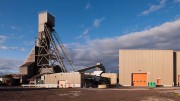This is one of those “good problems” you hear about from time to time in business. After weathering the punishing collapse in demand for commodities that began in 2008 and dragged on for more than two years, the mining industry has bounced back over the past year and is once again posting very strong gains.
Based on Hay Group’s global mining benchmarks, this rebound has translated into a 30% average increase in market capitalization and revenue for miners.
Most experts agree this demand for production and growth in the mining industry will continue unabated, unless a serious downturn is brought on by the eurozone crisis and an economic slowdown in China.
Here’s where the “good problem” comes in.
New projects and project development are putting pressure on everything from physical supply chains to the supply for executive and technical talent.
As the industry strengthens and grows, it becomes even more vital for mining companies trying to either retain or attract top executive talent to come up with the right remuneration packages.
So what has happened with executive pay as the industry recovered from the commodities collapse? Did pay packages align with industry performance?
Since 2001, Hay Group has conducted an annual global study of executive compensation for the largest producing miners, including in Australia, Canada, Chile and the U.S. Our 2011 study consists of more than 2,000 executives from more than 400 business units. Here’s what we learned:
• Within the total pay package of top-tier CEOs, base salary accounted for 20%, annual incentive for 20% and long-term incentive arrangements (i.e., stock options) for 60%. Clearly, top tier mining CEOs are rewarded for improving share value.
• CEOs of North American miners and large global metals and mining companies had a larger incentive package relative to CEOs in other geographies.
• On average, all CEOs’ total pay packages went up by 25% between 2010 and 2011, mostly driven by annual incentive and long-term incentive awards.
• Australian executive (including CEOs) base salary and annual incentive levels continued to lead those of Canada and the U.S.
• For North American CEOs’ long-term incentives, time-vested stock options plus performance-vested share units are most common. Among CEOs outside of North America, performance share units are more common.
• Multi-line and precious metals mining companies demonstrated a stronger alignment between CEO pay and corporate performance when compared to base metal and coal, or fuel miners.
• Earnings (i.e., net income, earnings before interest and taxes, and earnings per share) continue to be the primary performance metric for funding annual incentive programs across geographies. In some instances, a measure of capital efficiency (i.e., return on equity, return on capital employed) is included.
So where do mining companies go from here? How do they put together the proper mix of pay and incentives to make sure they don’t find themselves short of top executive talent to lead them during the rebound?
We believe that throwing more money at the problem is not a viable solution given the current corporate governance climate.
It is a fine balance to manage risk, performance and compensation outcomes. This does not mean that you should simply follow the market. It is more important to find the balance that best suits your business. Figuring that out involves asking some questions, including:
• Does your compensation strategy balance short- and long-term performance objectives? More importantly, do they fit your strategy?
• Have you achieved the best balance between “fixed” and “at-risk” pay?
• Is the time horizon for incentives aligned with the time horizon of risks?
• Are both absolute performance and relative performance measured?
• Are performance goals set too high, appropriately or too conservatively?
• Is discretion appropriately used to deal with extraordinary situations?
Crafting the right compensation strategy is often described as more of an art than a science. Forcing yourself to come up with good answers to the questions outlined above will help to place more rigour around your compensation process.
— Based in Toronto, the author is national director for executive compensation at Hay Group and a member of the firm’s Executive Reward Global Leadership team. He is a former lawyer and compensation director, and has worked with private and public sector clients across Canada in the areas of corporate governance, compensation strategy, competitive benchmarking and incentive design. He can be reached at: christopher.chen@haygroup.com.
Hay Group is a global management consulting firm with over 2,600 employees working in 84 offices in 48 countries, with clients in every major industry. Visit www.haygroup.com for more information.




Be the first to comment on "Commentary: Mining execs’ pay jumps as industry rebounds"